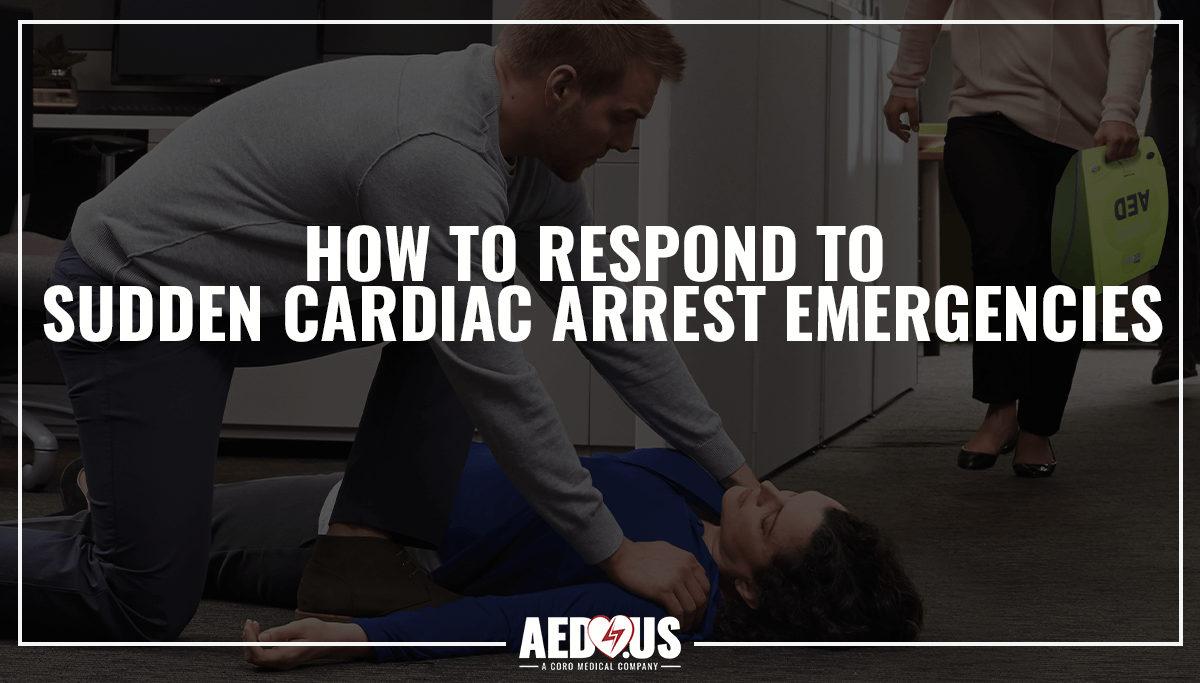 October is Sudden Cardiac Arrest Awareness Month, and we want to celebrate by educating you on what we do best: saving lives. Together, we can strengthen our individual links in the chain of survival, keeping our families and communities safer.
October is Sudden Cardiac Arrest Awareness Month, and we want to celebrate by educating you on what we do best: saving lives. Together, we can strengthen our individual links in the chain of survival, keeping our families and communities safer.
What is Sudden Cardiac Arrest?
Sudden Cardiac Arrest (SCA) is a condition where the heart suddenly stops beating. As a result, blood flow from the heart to the brain, lungs, and other tissues in the body stops within seconds, meaning this condition is fatal within minutes. SCAs are different from heart attacks, which occur when blood flow to the heart stops due to a blocked artery. Sudden Cardiac Arrest accounts for over 350,000 deaths every year, so let’s talk about how we can reduce that number.
How to Respond to a Sudden Cardiac Arrest Emergency
The critical component of caring for an SCA victim is time: a person who has suffered from cardiac arrest will be unconscious and without a pulse within seconds, and will lose their life within minutes. The faster you act, the better. If you encounter somebody who you suspect suffered an SCA, here are the steps you should take:
- Tap and shout to make sure the person is unconscious
- Call 9-1-1
- Locate an AED
- Perform Hands-Only CPR
Calling 9-1-1 and fetching an AED are tasks that should be delegated to other bystanders if possible, so you can focus on helping the victim. To be clear, CPR coupled with shock by an AED is the only way to save a person who has had an SCA.
CPR Basics
If your last lesson in CPR was watching the episode of The Office where Dwight cut off the mannequin’s face, you’re not alone. Roughly 70% of Americans say that they don’t feel confident delivering CPR, or that their training has significantly lapsed. Luckily, the basics of CPR are easy enough to remember. Place your hands on top of one another and push hard and fast in the center of the chest. A useful trick to keep pace is to perform compressions to the beat of Sweet Home Alabama or Stayin’ Alive. If you’d like to learn more, we offer classes and plenty of resources to refresh your memory.
AED Accessibility
Having an AED on hand can be the true difference between life or death. Most devices will guide you through the entire process with visual and auditory prompts, in addition to delivering that life-saving shock. Depending on local laws, businesses and community centers should have an AED on hand. Browse our extensive collection of AEDs to keep your loved ones safe!
 Written by Blaire Czarniecki
Written by Blaire Czarniecki
Customer Service Director
Fact checked by Phillip Woods, BA, NREMT-P, FP-C
Blaire attended the University of Tennessee where she graduated with a Bachelor of Science in Human Ecology- Child and Family Studies. She has been in the Automated External Defibrillator (AED) industry for over eight years and is the Director of Customer Service for Coro Medical. Blaire is also an American Red Cross-certified CPR/AED/First Aid Instructor, highly trained by each manufacturer on their specific AEDs, and knowledgeable regarding ALL State AED regulations and legislation.
“I know that every day I come to work, I am playing a part in saving someone’s life. I am passionate about these devices and am always looking for new and innovative ways to spread awareness and knowledge about Sudden Cardiac Arrest (SCA). I look forward to the day when everywhere I go, I will see an AED—when SCA will no longer take any lives.”
Last updated October 5, 2020





